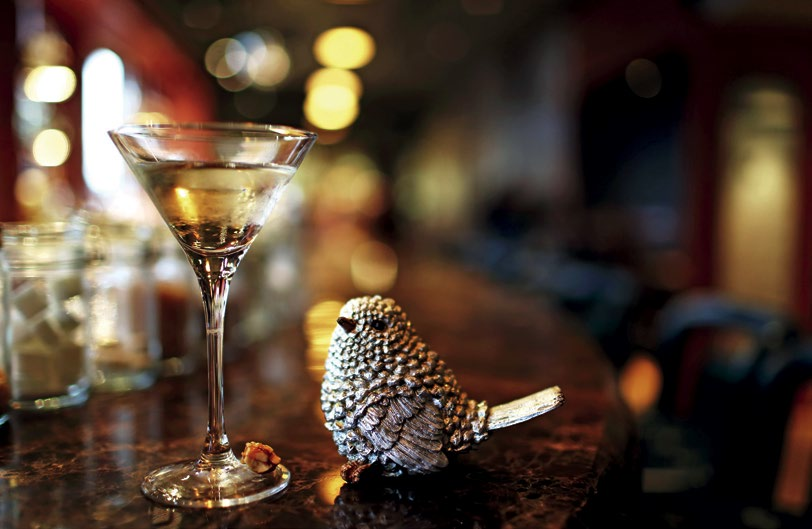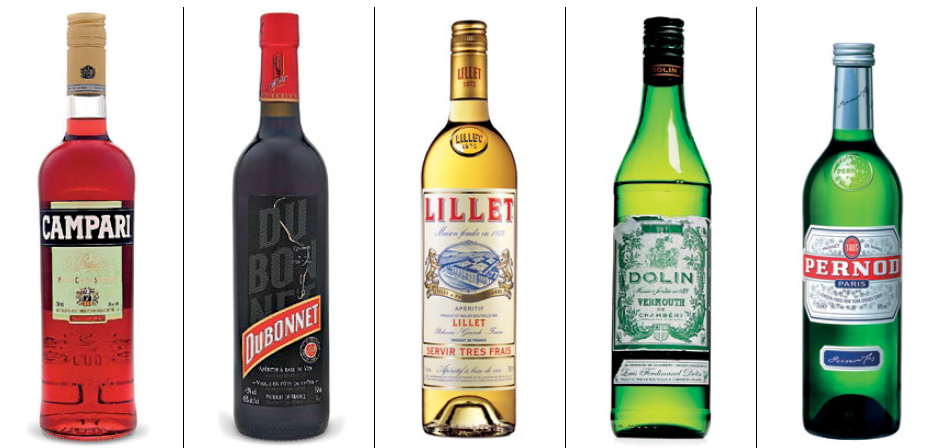Classic aperitifs such as Campari, Dubonnet and absinthe find new life in trendy cocktails.


Classic aperitifs such as Campari, Dubonnet and absinthe find new life in trendy cocktails.

For many years relegated to the dusty back reaches of the bar cabinet, aperitifs such as Campari, Dubonnet, Lillet, absinthe and vermouth are back, gracing the shelves of the world’s hippest bars. These classic European names, once the epitome of elegant drinking and dining, went out of vogue in recent decades but are having a revival. Their latest incarnation comes with a contemporary twist: They are being used as ingredients in cutting-edge cocktails.

In Hong Kong, for example, VEA Restaurant and Lounge serves the PCC – Parmigiano Cheese Cocktail – a combination of redistilled cheese Absolut vodka and dry vermouth, garnished with a salted caramel nut brittle. At Quinary, The Black Pearl is a blend of Scotch whisky, Italian vermouth and Chambord liqueur, plus a few drops of historic Peychaud’s and Angostura bitters. In London, The Fumoir in the Claridge’s hotel off ers Tropical Morning Fizz, a modern take on the Morning Glory Fizz, which is made with Powers John’s Lane Irish whiskey, lime juice, orgeat (a sweet syrup of nuts and fl ower water), absinthe and coconut soda. In Singapore, too, these liquors are going through a mixology revival, being used in such cocktails as The Gibson, the signature cocktail at Bukit Pasoh’s Gibson cocktail bar. Served with a trio of condiments including smoked tsukemono (preserved vegetables), smoked quail’s egg topped with caviar, and a pearl onion pickled in-house, it is made with Hendrick’s gin, Monkey 47 gin and Dolin Vermouth de Chambery.
Another cocktail, called Prohibition, is made with Cutty Sark Prohibition Edition whisky, Campari and Antica Formula vermouth. So why the resurgence in these spirits, until recently considered oldfashioned and dated? “Trends evolve; what has dropped out of fashion will always come back in fashion; it’s just a matter of time,” says Antonio Lai, mixologist and bar consultant for the Tastings Group in Hong Kong. “Also, drinkers are showing a growing curiosity about and knowledge of spirits in recent years.” In addition, there has been an increasing awareness and understanding of the craft of cocktail-making, its history, and the ingredients involved. Today’s bar-hoppers appreciate knowing that the cocktail they are drinking has a story, a place in the history of bartending. “Bartenders are constantly pushing the boundaries of conventional cocktails,” says Aki Eguchi, bar programme director for Jigger and Pony, Gibson, The Flagship, Humpback, and Sugarhall in Singapore.



“We are seeing a surge in inventive new twists, modernday classics, and even brand new creations which make use of such classic spirits to bridge the old world with the new.” In addition, the sheer number of bars in any big city has meant that some venues distinguish themselves from the competition by having a defi ned concept or theme that evokes an era or a particular place. Take the Jazz Age, New York vibe of the Manhattan bar at Regent Singapore and its on-site rick house. The Fumoir bar at Claridge’s, too, re-creates the Art Deco glamour of the 1930s. The decor, drinks, music and atmosphere were inspired by the original glass panel above the door that was presented to the hotel by artist Rene Lalique in 1931 when the bar was a smoking lounge. “The Fumoir once saw a host of glamorous guests enjoying cigars after dinner, dressed to the nines, sipping cognacs, cocktails and whiskies,” says Denis Broci, manager of The Fumoir and Claridge’s Bar.
“We set out to re-create that wonderful scene by turning our heads to a range of vintage spirits and classic cocktails which our bar team have re-worked and re-moulded to suit our current tastes and trends, while maintaining a nod to this bygone time.” While The Fumoir takes its inspiration from the drinking of digestifs – post-prandial tipples – many of the classic European spirits were drunk as aperitifs. The European tradition of drinking aperitifs, having a refreshing, low-alcohol drink before dinner, was designed to stimulate the appetite, so the drinks are usually slightly dry rather than sweet. While an aperitif can be as simple as a glass of white wine or champagne, the most pleasing are those served attractively in a long-stemmed wine or martini glass, over ice, sometimes with soda, and perhaps with a twist of orange peel. These aperitifs, including Campari, Dubonnet, Lillet and vermouth, are often made from secret herbal recipes dating back more than a century.


The tradition of aperitifs has waned since the late 19th century, when it was very popular across Europe, but the habit of aperitivo in Italy, tapas in Spain, and Aperitif a la Francaise in France – all a combination of early drinks and light snacks – remains. And while the tradition has never made it to Asia, the spirits are now being embraced by cocktail drinkers across the region. “Here in Singapore, we see a diverse group of people who appreciate these cocktails, from a younger crowd out exploring the world of cocktails, to enthusiasts who are highly knowledgeable,” says Eguchi. Lai, too, says aperitif-based cocktails can be enjoyed by everyone, especially those who enjoy knowing that their cocktail has history. “The fact that we refer to these aperitifs as ‘classic’ proves that they have stood the test of time and can be appreciated by everyone. People who have a liking for stronger, more fl avourful drinks tend to enjoy these spirits on their own, or in classic cocktails in which the original fl avours are accentuated.”

CLASSIC APERITIFS
There are many spirits and fortified wines drunk as aperitifs, but here are some of the most well-known.

LEFT TO RIGHT
1. CAMPARI: This rose-red Italian liqueur is possibly the most famous one-name aperitif of them all. The recipe has been a closely guarded secret for 150 years, but is believed to contain rhubarb and ginseng. This bitter drink’s creator, Gaspare Campari, began bottling his product in 1860 but it became famous only when Gaspare’s son enlisted famous artists of the 1920s and 30s to design the nowlegendary Campari advertisement posters. Campari is a key ingredient in a Negroni – a classic aperitif that’s increasingly popular in the world’s hip bars and restaurants
2. DUBONNET: This sweet, aromatised aperitif is a blend of fortified wine, herbs, spices and quinine that originates from France. White Dubonnet is made from dry white wine and herbs and is less syrupy.
3. LILLET: James Bond drank Lillet in his Vesper martini, a drink invented and named by Ian Fleming in the 1953 novel, Casino Royale. This winebased aperitif, that also comes in red and white, is made in a small town south of Bordeaux in France. The recipe is a secret but delicately balances herbs, roots and fruit. The rich, fullbodied white Lillet has notes of candied orange and mint and is classically served with a twist of orange.
4. VERMOUTH: The Italian varieties are Martini & Rossi and Cinzano, while the French is Noilly Prat. The white version is dry, the red sweet, and both are made from wine and herbs. Sweet vermouth is known for being an ingredient in a Manhattan, but it can be drunk chilled straight up, or on the rocks.
5. ANISE-BASED DRINKS: Many aperitifs are made from aniseed, including pastis, such as Pernod and Ricard, absinthe and anisette from France, ouzo and mistral from Greece, and sambuca from Italy. Often diluted with water, these strongly flavoured drinks are an acquired taste. “There are not many people who can genuinely enjoy the taste of aniseed,” warns Antonio Lai, who creates the bar menus at some of Hong Kong’s most cutting-edge bars including Quinary, Origin and The Envoy. It’s perhaps best to leave these liquorice-flavoured drinks in the capable hands of mixologists.























